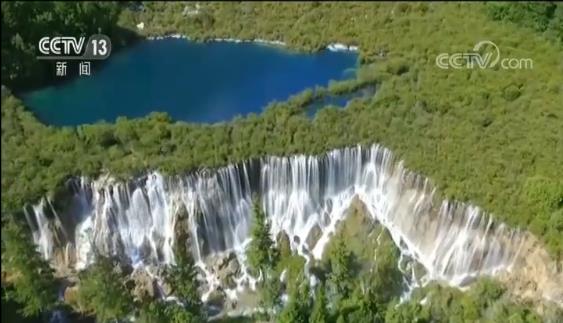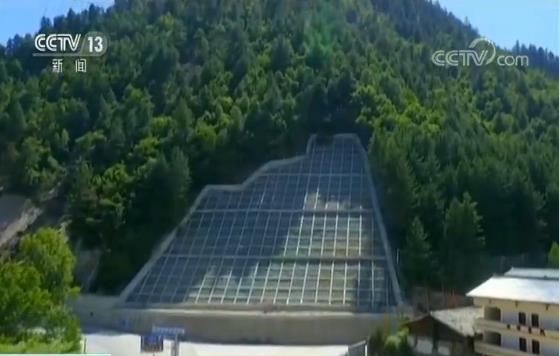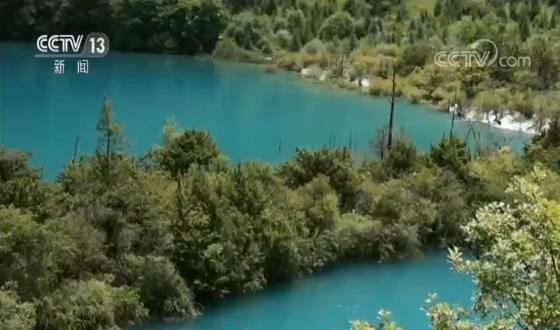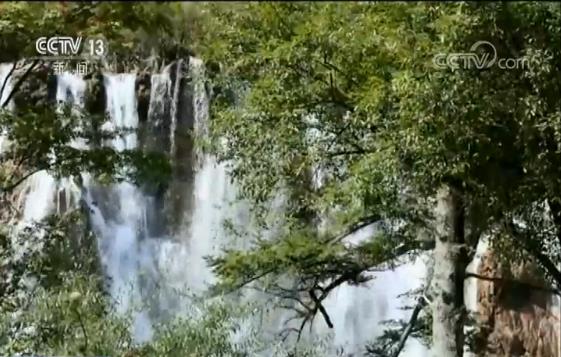[First anniversary of Jiuzhaigou earthquake] Aerial photography of Jiuzhaigou to see the changes in the air
Cctv newsOn August 8, 2017, an earthquake of magnitude 7.0 occurred in Jiuzhaigou County, Sichuan Province, and 130 villages in 12 townships were affected to varying degrees. One year has passed, how is Jiuzhaigou recovering after the disaster? Let’s look at the pictures taken by CCTV reporters a few days ago.

What you see now is the landmark scenic spot located in Jiuzhaigou scenic area — — Nuorilang Waterfall, which is 320 meters wide and 25 meters high, is the widest waterfall in China at present. "Nuorilang" means gigantic in Tibetan, and Nuorilang Waterfall means magnificent waterfall. In the earthquake, the waterfall collapsed, and the waterfall was no longer magnificent, as if it had dried up. Since March this year, after manual intervention, Nuorilang Waterfall has now returned to its pre-earthquake appearance, with surging water and huge potential, which shocked the valley.
Reed Sea is a semi-swamp lake in Jiuzhaigou Scenic Area, located in the lower reaches of the Flaming Sea. During the earthquake, 450,000 cubic meters of water suddenly fell down due to the dam break of the Flaming Sea. Under the huge scouring of the lake, half of the reeds fell, and the trees impacted from the upstream piled up on the shore of the lake, which was a mess. After a year’s restoration, today’s reed sea has regained its vitality. The reeds are erect and tall. From the air, the yellow reeds collide with the blue lake, as if it were a palette of nature.

Provincial Highway No.301 is the main traffic artery in Jiuzhaigou. During the earthquake, a large area of landslide occurred at the intersection of Provincial Highway No.301 and Shenxianchi Scenic Area Highway, and a large number of flying stones kept rolling down, which seriously threatened the lives and property of passing vehicles and nearby villagers. The restoration project completed at the end of December 2017 uses a lattice retaining wall to firmly fix the loose mountain and restore the vegetation around the landslide.
Respect for nature and moderate intervention to maintain the original ecology
On November 8, 2017, the post-disaster recovery and reconstruction of Jiuzhaigou was fully launched. In the process of reconstruction, scientific design and management were carried out, and green ecological reconstruction was emphasized.

There are 114 post-disaster reconstruction projects in Jiuzhaigou, including infrastructure and public service facilities, prevention and control of geological disasters, restoration and protection of ecological environment, restoration of scenic spots and housing for urban and rural residents. Up to now, 105 projects have been started, of which 25 have been completed.

In the restoration of the natural heritage in Jiuzhaigou scenic area, dynamic monitoring and conservation are carried out to maintain its authenticity to the greatest extent. Affected by the earthquake, Nuorilang Waterfall, a landmark scenic spot in Jiuzhaigou Scenic Area, collapsed, with a collapse length of about 12.8 meters. The original 320-meter-wide waterfall water leaked from the cracks in the collapsed body, making the waterfall lose its original landscape.
After artificial intervention, the Norilang Waterfall has now restored its former beauty. It is estimated that by 2020, Jiuzhaigou will basically complete the task of ecological environment restoration and protection, and the overall quality of the ecological environment will basically reach the pre-earthquake level. During this period, 288,400 mu of damaged forest vegetation and 117,000 mu of grassland vegetation were restored, and 50,000 mu of giant panda habitat corridor was restored.